21 Best Drought-Tolerant Shrubs to Boost Your Garden's Resilience
These drought-tolerant shrubs will help you create a lush garden without running up your water bill.
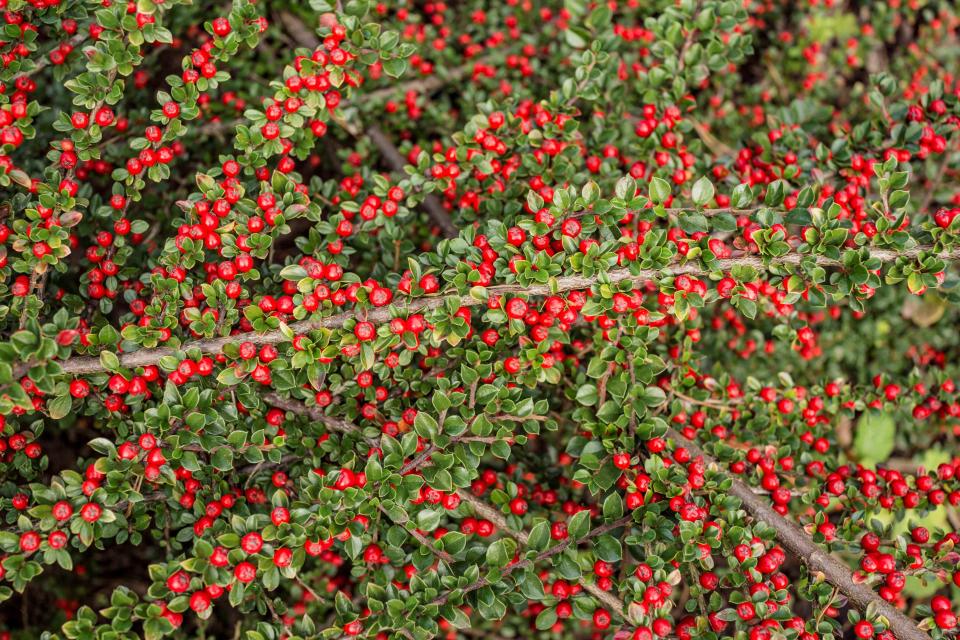
Tim Bird / Getty Images
Planting drought-tolerant shrubs is a good way to ensure that your landscape looks lush and full, even in times of limited rainfall. The options on this list include beautiful evergreens, blooming shrubs, plants with showy berries, and shrubs that turn gorgeous colors in the fall. Several are natives that are adapted to growing conditions across much of the country.
Tips
While these shrubs are drought tolerant once established, they will need regular watering for the first three months after planting to help them grow a robust root system.
Bayberry
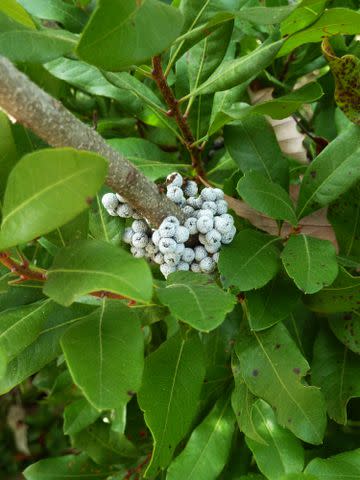
Denny Schrock
An easy-to-grow North American native, bayberry (Myrica pensylvanica) has fragrant, glossy, gray-green leaves that remain evergreen in the warmer parts of its range. Plant several of these tough shrubs together to create a screen or informal hedge. Male and female plants are needed to produce the grayish blue berries, which attract birds.
Growing Conditions: Full sun to part shade and well-drained soil
Size: 5 to 8 feet tall and wide
Zones: 3-7
Bluebeard
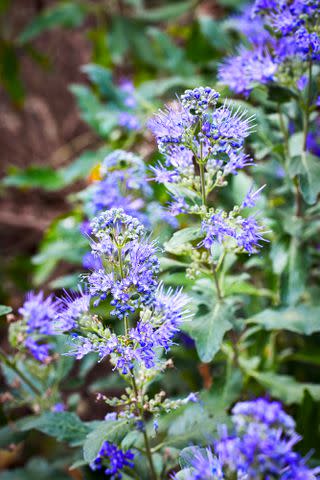
Carson Downing
A mounding, deciduous shrub, bluebeard (Caryopteris spp.) is one of just a handful of shrubs that bloom in late summer and fall. It is covered with light blue flowers that make it look like it’s enveloped in a blue mist. The flowers attract many pollinators, especially butterflies.
Growing Conditions: Full sun and loose, well-drained soil
Size: 2 to 3 feet tall and wide
Zones: 5-8
Creeping Juniper
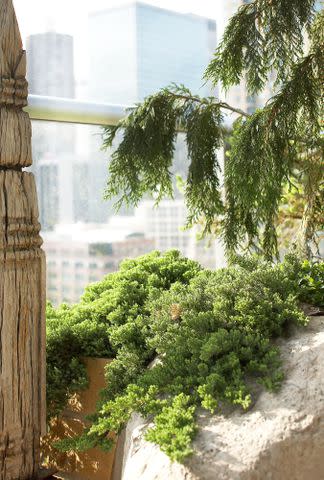
Peter Krumhardt
An evergreen native to North America, creeping juniper (Juniperus horizontalis) has long, trailing branches covered with needle-like, blue-green foliage in summer. The foliage usually takes on a purplish hue in winter. Plant creeping juniper on a slope to prevent erosion and along retaining wall edges. It also makes an excellent living mulch in a mixed shrub border.
Growing Conditions: Full sun and dry, sandy soil
Size: 1 foot tall and 5 to 8 feet wide
Zones: 3-9
Creeping Oregon Grape
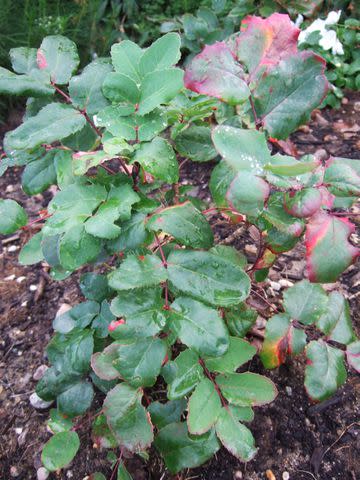
Denny Schrock
Also known as creeping barberry, creeping Oregon grape (Mahonia repens) is a low-growing shrubby evergreen that's native to western North America. It has leathery, holly-like, blue-green leaves that turn an attractive shade of purple in winter. Its fragrant yellow spring flowers are followed by bluish fruit in late summer.
Growing Conditions: Part shade and well-drained soil
Size: 1-2 feet tall and 2-3 feet wide
Zones: 5-9
Fragrant Sumac

A North American native with bold red, burgundy, and purple fall color, fragrant sumac (Rhus aromatica) is named for the lemon scent its leaves exude when crushed. It spreads slowly to form a dense thicket. Use it to stabilize a slope or as a low-maintenance mass planting.
Growing Conditions: Full sun to part shade and well-drained soil
Size: 2 to 6 feet tall and 6 to 10 feet wide
Zones: 3-9
Fine Line Buckthorn
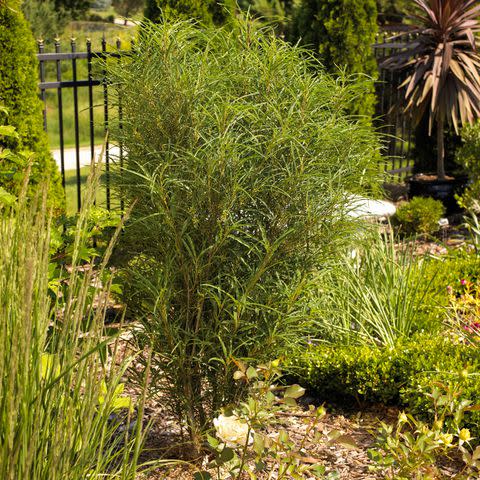
Fine Line is a variety of buckthorn (Rhamnus frangula) that has feathery, fern-like leaves. It also produces very little fruit, so is not weedy like other types of buckthorn. Plant several of these tall, narrow shrubs 24 inches apart to create a dense, deciduous screen. It has a moderate growth rate and rarely needs pruning.
Growing Conditions: Full sun to part shade and well-drained soil
Size: 5 to 7 feet tall and 1 to 2 feet wide
Zones: 2–7
Glossy Abelia
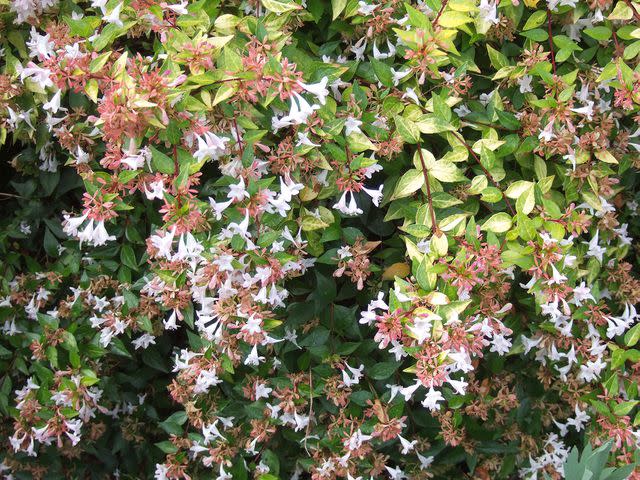
Graceful arching branches and fragrant flowers are the hallmarks of this tough, drought-tolerant shrub. Glossy abelia (Abelia x grandiflora) is semi-evergreen in Zones 5 to 8 and reliably evergreen in Zone 9. Use it in a mixed garden border or plant several glossy abelias together to create an informal hedge.
Growing Conditions: Full sun to part shade and well-drained soil
Size: 3 to 6 feet tall and wide
Zones: 5–9
Nannyberry Viburnum
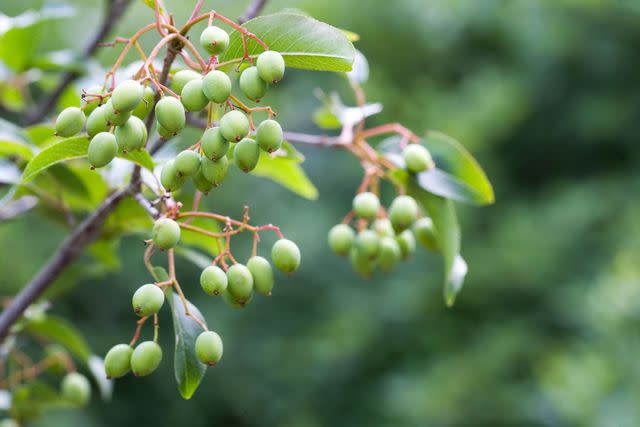
Bryan E. McCay
Native to eastern North America, nannyberry viburnum (Viburnum lentago) is a large shrub with fragrant spring flowers that attract pollinators. Berries form in fall and are popular food for wildlife. It also boasts yellowish to reddish fall foliage.
Growing Conditions: Full sun or part shade and well-drained soil
Size: 10 to 16 feet tall and 6 to 12 feet wide
Zones: 2–8
Ninebark
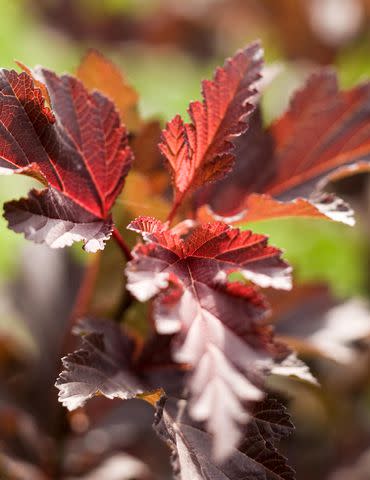
Ninebark (Physocarpus spp.) is a versatile drought-tolerant shrub with year-round interest. Spring flowers are followed by color-rich foliage—some cultivars have deep purple or chartreuse leaves—in summer and fall. Peeling bark on the shrub’s stems is an asset in winter. Look for ‘Diablo’ (shown here), 'Dark’s Gold’, and ‘Summer Wine’ that have especially eye-catching foliage color.
Growing Conditions: Full sun to part shade and well-drained soil
Size: 4 to 8 feet tall and wide
Zones: 3–7
Rockspray Cotoneaster
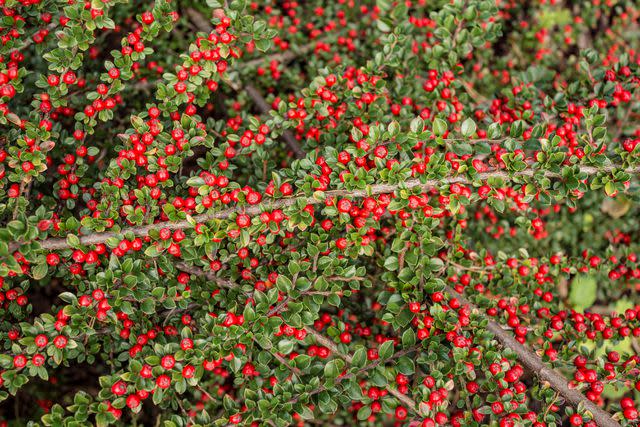
Tim Bird / Getty Images
A low-growing shrub with stiff, horizontal branches, rockspray cotoneaster (Cotoneaster horizontalis) can cover large swaths of ground. Use it as a groundcover plant in a mixed garden border or a low-maintenance foundation planting. The small, glossy green leaves of rockspray cotoneaster are usually deciduous in Zones 5 and 6, and frequently remain through the winter in Zone 7. The red fruit develops in summer and often remains into winter.
Growing Conditions: Full sun to part shade and well-drained soil
Size: 2 to 3 feet tall and 6 to 8 feet wide
Zones: 5–7
Shrub Roses

Many types of shrub roses are quite drought-tolerant, such as varieties in the Knock Out and Drift rose collections. Most are also very disease-resistant, hardy, and low-maintenance. And you can find them in a range of beautiful colors and sizes so it's easy to find one that fits your garden's space and design best.
Growing Conditions: Full sun and well-drained, average soil
Size: up to 6 feet tall and wide
Zones: 3-10
Sea Buckthorn
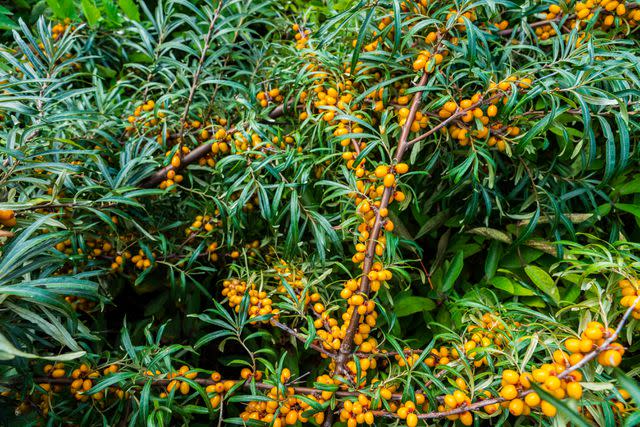
Mindstyle / Getty Images
Use sea buckthorn (Hippophae rhamnoides) as a screen or barrier plant. Its large, thorny stems creep out from the base of the plant to form a thicket. Tolerant of salt spray and a variety of harsh conditions including drought, sea buckthorn has silver-green leaves and eye-catching orange fruits on female plants in fall.
Growing Conditions: Full sun and average to poor soil
Size: 8 to 12 feet tall and wide
Zones: 3–8
Serviceberry
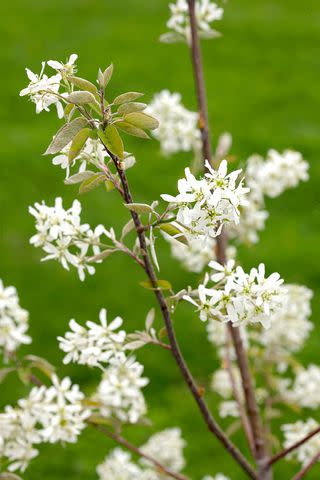
Serviceberry (Amelanchier spp.) is a large, multi-stem shrub or small tree. It has fragrant white spring flowers followed by a crop of edible fruit that attracts songbirds. In fall, its foliage turns striking shades of red, orange, and yellow. Plant it near a patio or entryway so you can enjoy it up close year-round.
Growing Conditions: Full sun to part shade and well-drained soil
Size: 5 to 15 feet tall and wide
Zones: 4–9
Shrubby Cinquefoil
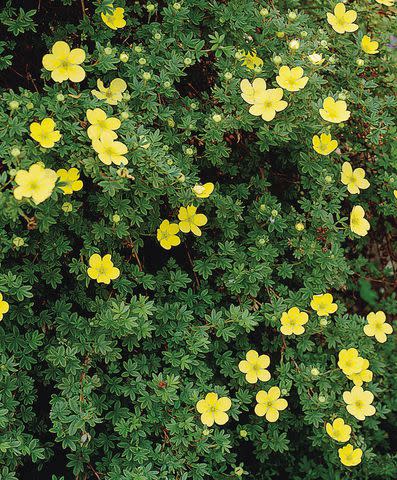
Yellow flowers open sporadically in summer on this fast-growing deciduous shrub. Shrubby cinquefoil (Potentilla fruticosa) thrives in cooler climates and grows best where heat and humidity are low. Prune it as needed in spring to maintain a pleasing mounded shape. This drought-tolerant shrub is popular with butterflies.
Growing Conditions: Full sun and average soil
Size: 2 to 4 feet tall and 3 to 5 feet wide
Zones: 3–7
Siberian Cypress
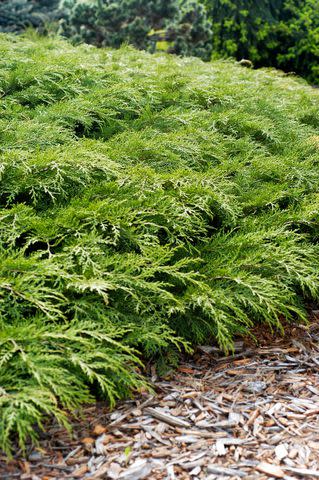
Doug Hetherington
The feathery, soft evergreen foliage of this low-growing evergreen groundcover is an excellent addition to the landscape. Pair Siberian cypress (Microbiota decussata) with drought-tolerant shrubs such as Fine Line buckthorn and smoke tree for a pleasing texture contrast. Siberian cypress, unlike many shrubs, grows well in part shade.
Growing Conditions: Full sun or part shade and well-drained soil. Grows best in regions with cool summers.
Size: 1 to 2 feet tall and 3 to 12 feet wide
Zones: 3–7
Smoke Tree
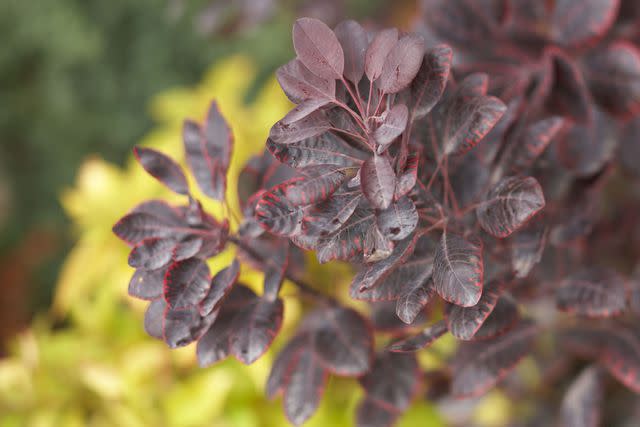
William N. Hopkins
While it is called a smoke tree (Cotinus coggygria), this deciduous plant also grows as a large multi-stemmed shrub. It has a loose, spreading habit and blue-green leaves that turn shades of yellow, orange, and purple in fall. Its name is inspired by its flower clusters that turn pink and cover the tree with hazy, smoke-like puffs in summer.
The sap of smoke tree is toxic to humans.
Growing Conditions: Full sun and average to poor soil with excellent drainage
Size: 10 to 15 feet tall
Zones: 5–8
Snowberry
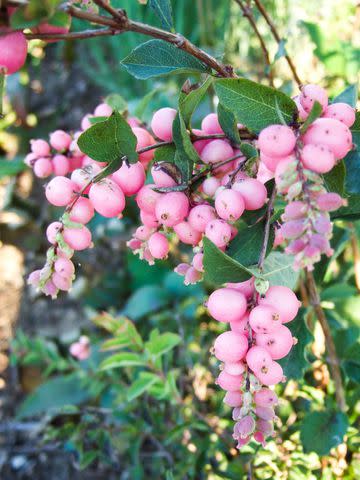
Snowberry (Symphoricarpos albus) has tiny pink-to-white flowers in summer that give way to clusters of pure white berries in fall (a pink-fruited variety is pictured here). The berries often stay on the deciduous, spreading plant all winter because birds don’t find them appetizing. This easy-to-grow North American native shrub works well in a loose hedge and for controlling erosion on slopes.
The berries of snowberry are toxic to humans and pets when ingested.
Growing Conditions: Full sun to part shade and well-drained soil
Size: 3 to 6 feet tall and wide
Zones: 3–7
St. John’s Wort
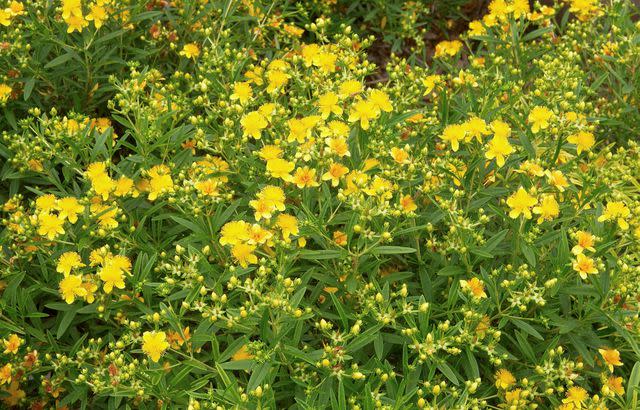
Sunny yellow flowers cover this summer-blooming shrub for weeks. St. John’s Wort (Hypericum spp.) is deciduous, but colorful berries decorate the plant in fall and persist into winter. Plant it near an entryway or in a mixed border where it will add instant interest.
St. John’s wort is toxic to humans, dogs, cats, and horses.
Growing Conditions: Full sun to part shade and average soil
Size: 1 to 4 feet tall and wide
Zones: 3–8
Weigela
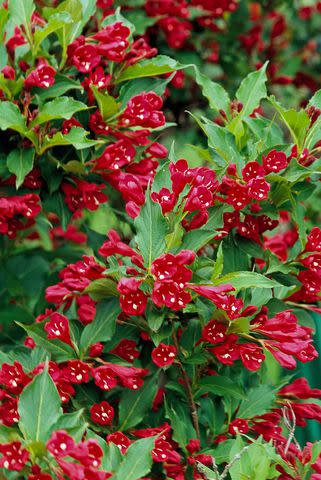
Hummingbirds love the tubular pink or red flowers of this medium-sized shrub. There are several cultivars of weigela (Weigela florida)—look for varieties with burgundy, variegated, or chartreuse foliage. Weigela blooms in early summer. And while this shrub tolerates drought well, it will flower for a longer period of time if watered through dry spells.
Growing Conditions: Full sun and well-drained soil
Size: 1 to 4 feet tall and wide
Zones: 4-9
Yaupon Holly
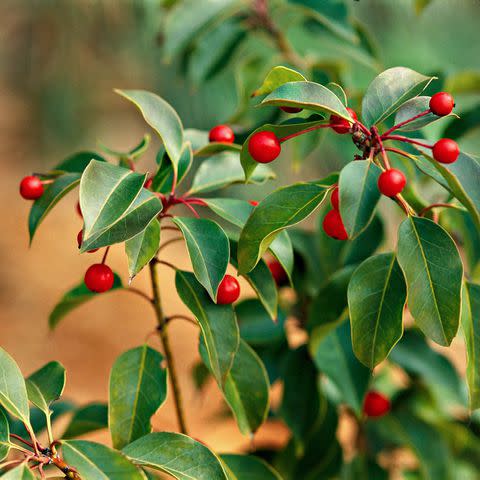
Evergreen yaupon holly (Ilex vomitoria) features dense branches and glossy, dark green leaves that are evergreen. Both male and female plants are needed to produce the attractive red berries. This holly tolerates a wide range of soils and can withstand both drought and flooding. Yaupon holly quickly grows into a very large shrub, but ‘Stoke’s Dwarf’ and ‘Nana’ are compact cultivars perfect for small gardens.
The berries of yaupon holly are food for wildlife but are toxic when ingested by humans and pets.
Growing Conditions: Full sun to part shade and average soil
Size: up to 10 feet tall and 8 feet wide
Zones: 7–9
Yew
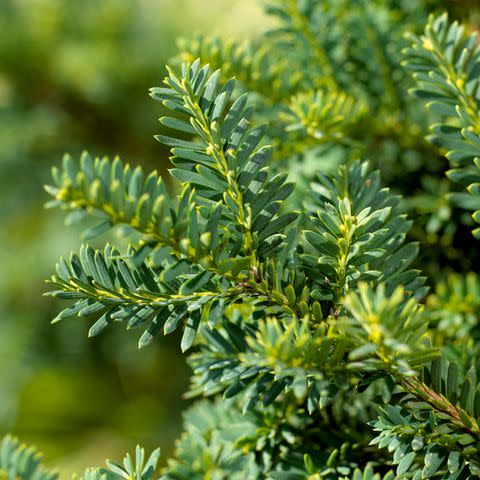
If you are looking for a drought-tolerant shrub you can sculpt into a formal hedge, yew (Taxus spp.) might be a good fit. Its thin, needle-like leaves are dark green and keep their color year-round. The plants have a pleasing, loose habit when not pruned regularly.
Be careful planting yew shrubs around children and animals because most parts of the plant are toxic if ingested.
Growing Conditions: Full sun to part shade and well-drained soil
Size: 4 to 40 feet tall and 4 to 20 feet wide
Zones: 4–8
Related: How to Pick the Best Bushes and Shrubs for Landscaping Your Yard
For more Better Homes & Gardens news, make sure to sign up for our newsletter!
Read the original article on Better Homes & Gardens.

